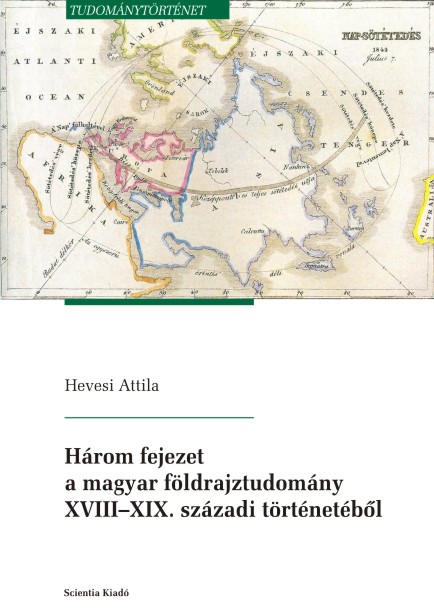Három fejezet a magyar földrajztudomány XVIII–XIX. századi történetéből
Three chapters from the history of the Hungarian geographical sciences of the 18th–19th centuries
Author(s): Attila Hevesi
Subject(s): Physical Geopgraphy, Regional Geography
Published by: Scientia Kiadó
Keywords: geographical sciences; Earth sciences; mineralogy; geology; cartography; Sámuel Brassai; Pál Bertalanffi; János Kászonújfalvi Szabó;
Summary/Abstract: In historical times, Earth sciences, such as mineralogy, geology, cartography, or geography, developed within the geographical sciences, parallel with and in the neighbourhood of astronomy. Earth sciences in Hungary started to emerge in the 16th century, written mainly in Latin, Hungarian, and German languages, together with the related sciences. The first Hungarian-speaking geographical literature, and also the related natural science literatures as well, was the Hungarian Encyclopaedia (1635) from János Apáczai Csere.Pál Bertalanffi had finalized the first complete, fully Hungarian written geographical textbook by 1757. As the result of his activity and inspiration, several cutting edge geographical books were written at the end of the 18th century and the beginning of the 19th century. Besides of his impact, János Kászonújfalvi Szabó (1803) recognized the processes of terrace formation almost a half a century earlier than the leading European Earth science community. It is well known that the world has been expanded after the 15th century and this fact has resulted the blooming of the geographical sciences. The huge amount of new geographical information required a paradigm change in the teaching of geography. The first practical researcher of this field was Sámuel Brassai (1834).The aim of this book was to introduce the geographical oeuvres of these three scientists.
Series: Tudománytörténet
- Print-ISBN-13: 978-606-975-005-6
- Page Count: 108
- Publication Year: 2017
- Language: Hungarian
- Table of Content
- Sample-PDF
- Introduction
- eBook-PDF

